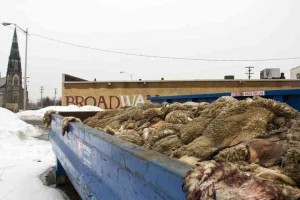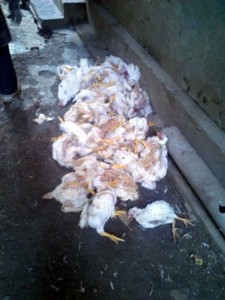Jerry Caird, the Thurston County environmental health specialist, is one of 6 inspectors who oversee more than 1,000 food establishments in Thurston County. That includes full-service restaurants, grocery store delis, fast food outlets and espresso stands.
 “I’ve never worked in a restaurant in my entire life,” he said. “But I feel like I have.”
“I’ve never worked in a restaurant in my entire life,” he said. “But I feel like I have.”
Instead, Caird has a bachelor of science in environmental health and extensive training on looking for food-related situations that can make people sick, such as room temperature potato salad, lettuce that’s contaminated with raw meat juice and workers who aren’t handling food safely.
He was an inspector for the state of Nevada for nine years, before taking a job with Thurston County 11 years ago.
“I think of myself as an advocate for public health,” he said.
Thurston County’s full-service and fast-food restaurants, along with its grocery store delis are inspected at least twice a year.
Cassie Andreotti, the manager at the Vic’s Pizzeria on Olympia’s west side, said she usually gets a little nervous when Caird shows up. But she said she appreciates the work he does.
“I think it’s incredibly important,” said Andreotti said during a recent inspection. “Without these guys, who knows what people would be serving.”
Businesses that only have a small amount of food preparation such as espresso stands, bakeries, meat markets and the non-deli sections of grocery stores are inspected once a year.
A typical inspection can take one to two hours, depending on the size of the kitchen.
“They’re all unannounced,” Caird said.
Most violations that are noted during an inspection are corrected immediately, said Sammy Berg, a senior environmental health specialist who supervises the county’s health inspectors.
“It’s not just to find people doing things wrong,” Caird said. “But to show them a better way that will help protect public health.”
Mom and pop businesses tend to struggle the most with food inspections, Berg said. One of the big reasons why is because a lot of fast food companies have their own corporate inspectors that are in charge of quality control, he added.
When problems are found, Caird said he tries to work with restaurant owners and managers to make sure there’s a pattern of improved scores.
“A lot of owners tend to focus on what the customer sees — the bathrooms, the dining rooms,” Caird said. “But they really should focus on the kitchen.”
Thurston County’s Environmental Health Division also tracks complaints that are emailed or telephoned in by consumers. The department had 226 complaints about restaurants in 2014.
Most of those were about possible food-borne illness that callers believed were picked up at local restaurants.
“The last thing you ate isn’t necessarily the thing that made you sick,” Berg said, adding that signs of a food borne illness can take 24 to 72 hours to appear.
If the department receives several phone calls that correlate to the same restaurant, they check it out.
 A dumpster at the Eastern Market was brimming with scores of rotting lamb carcasses Sunday afternoon, plainly visible to motorists along Gratiot Avenue in what is a clear violation of state law and a risk to public health. The Bodies of Dead Animals Act of 1982 requires carcasses to be burned, buried or passed off to a licensed processor within 24 hours of being slaughtered.
A dumpster at the Eastern Market was brimming with scores of rotting lamb carcasses Sunday afternoon, plainly visible to motorists along Gratiot Avenue in what is a clear violation of state law and a risk to public health. The Bodies of Dead Animals Act of 1982 requires carcasses to be burned, buried or passed off to a licensed processor within 24 hours of being slaughtered.









